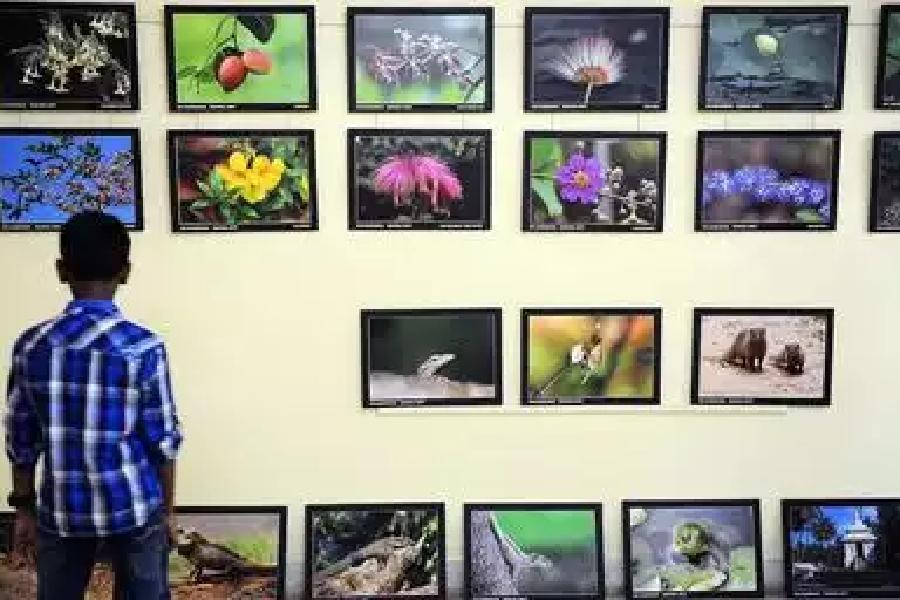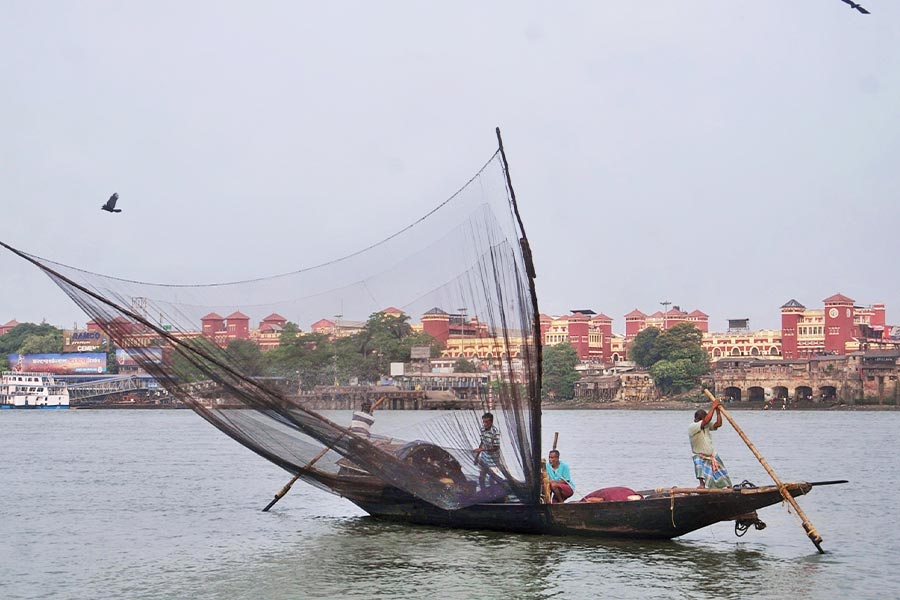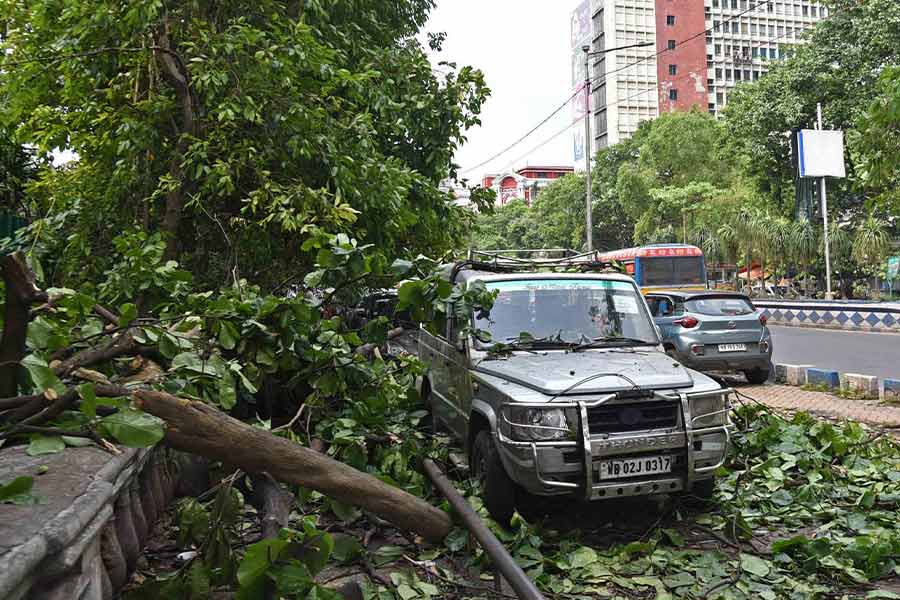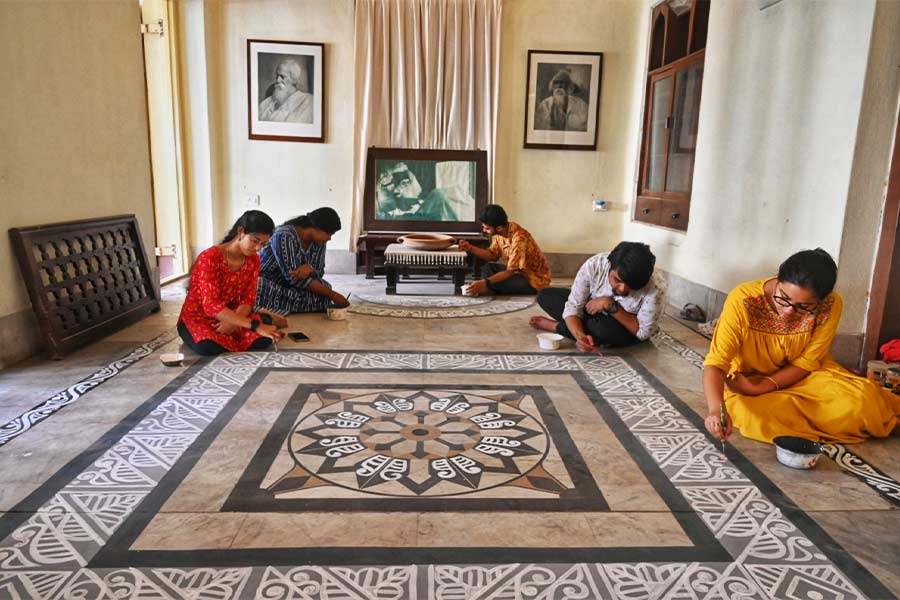Located right within the city is a place that is often not considered a place. Though it is a miracle for the city.
The East Kolkata Wetlands are a natural sewage treatment plant for the city’s waste. Here the layout of the landscape is such that earth, water and sunlight work together to purify the wastewater. This is an outstanding natural gift.
The wetlands also defend the city against flooding, because of the way the land slopes towards them. But they lie outside the limits of the city’s consciousness, seen as a garbage dump, Dhapar Maath. And the city is encroaching on it relentlessly, turning it into real estate.
The wetlands have a third life-giving feature. They are home to an overwhelming variety of plant and animal life. An ongoing exhibition at Goethe Institut/Max Mueller Bhavan, Kolkata, celebrates this. Titled “Symbiotic Cohabitation”, the exhibition has been created together by Disappearing Dialogues Collective, a city initiative, and the wetlands community.
The East Kolkata Wetlands are protected under Ramsar Convention, which designates wetlands of global importance. In the 12,500-hectare area, inhabited by 1,50,000 people, the bio-diversity is both aquatic and terrestrial, says Anushka Chakraborty, sustainability educator with Disappearing Dialogues. “The species of recorded plants alone number 381,” she says. You hear numerous birds, nocturnal and of daylight.
At the exhibition, an installation, a circular shelf with many levels, displays examples of natural life from the wetlands. Despite the rapid urbanisation, many traditional ways of life still survive here. People turn to plants not only for food, but also for their medicinal and other intrinsic values.
Among the many objects from the wetlands is a notebook with fine pen-and-ink sketches detailing some plants. Some of these are unfamiliar, but all are quite spectacular. The sketches are drawn by Nobina Gupta, the founder-director of Disappearing Dialogues, and an artist.
An aquatic plant drawn in the book, jal lajjabati, is a variety of the touch-me-not. Another, called kantajanjhi, is a soft, floating aquatic plant. Mushrooms abound in the wetlands. Yams, with their rich green velvet foliage, come in many varieties. You have to know that a maan kochu, which is edible, is different from poddo kochu, which is not edible, but the difference is subtle.
Another notebook contains paintings by children from the wetlands of plants and animals from the area. About 205 varieties of moths and 100-odd varieties of butterflies are seen in the wetlands, and some very arresting animals. Many of the birds and animals are nocturnal. The wetlands’ light is good for a nocturnal creature like the moth, says Gupta.
One side of a passage at the exhibition space has turned into a herbarium, with specimens of wetlands plants elegantly framed. This may travel as an exhibition by itself later. From the ceiling hangs scrolls, with paintings of wetlands plants done by Gupta.
On frames next to each other you see the familiar thankuni (Centella asiatica), much recommended in Bengali households as a cure for bad digestion, and kaladana (Hewittia malabarica), which is rubbed on sores. Tulsi comes in several varieties. Among edible plants, with the puin, kalmi and notey leaves, you see shanti shaak (alligator weed).
Nectarine plants, such as the joba (hibiscus), jhumka lota (passion flower) and nil hurhure (fringed spider flower) are very common in the wetlands. “These sometimes attract butterflies in groups for collecting nectar,” says Gupta. “They also attract the predators of butterflies, such as garden lizards and spiders, which supports biodiversity,” she adds.
“The way wastewater is used for fish cultivation is also a great skill,” says Gupta. The right mix of wastewater with clear water ensures the right nutrition as well as guards against toxicity. The right mix also ensures good quality vegetables. Though many feel compelled to go out and work in the city, fishing, vegetable- and flower-farming, rice cultivation, animal husbandry, weaving and jaggery-making are among the traditional livelihoods practised here.
This is possible through knowledge handed down for generations. Gupta especially mentions the wastewater management. “But such knowledge, which sustains so many lives, finds no recognition in any formal education system. This exclusion should be questioned,” she says. “We also often overlook what is available near us,” she adds.
A third notebook contains recipes from the area, humble and most tempting, such as the kalo kochur chingri (prawns in black taro).
On Saturday evening, Disappearing Dialogues conducted an evening visit in the area to look at the sky at night. The wetlands shone under the moonlight and the stars came nearer.
The exhibition, conceptualised by Gupta, has been put together with the help of Chakraborty, Aahiree Banerjee, Nayna Naskar and Nibedita Naskar and several villagers.
It is on view till February 29, from 11am to 6.30pm daily, except on Sundays and public holidays.It is more important to protect the wetlands from real estate sharks than to conduct seminars on sustainability practices in the city.






